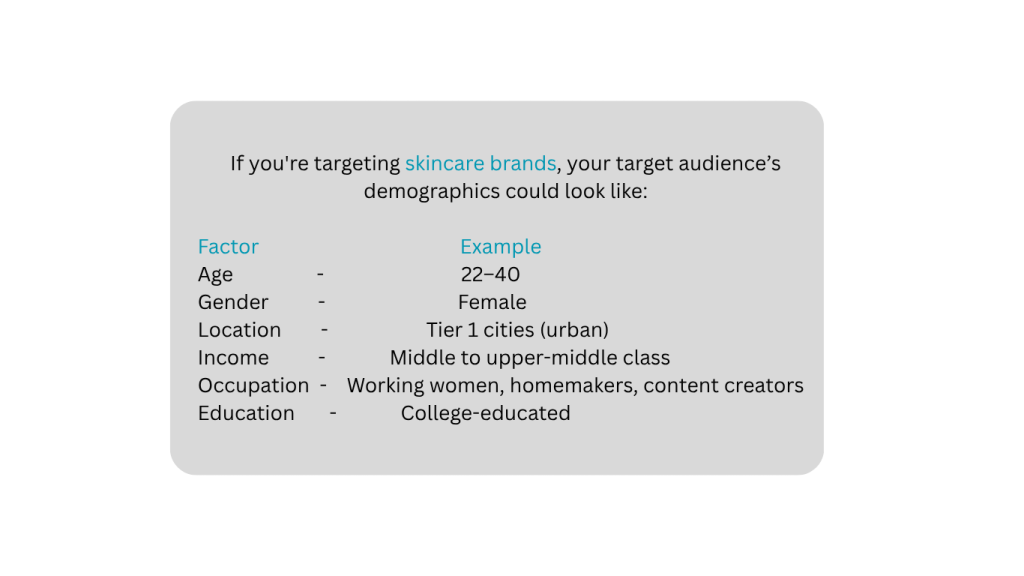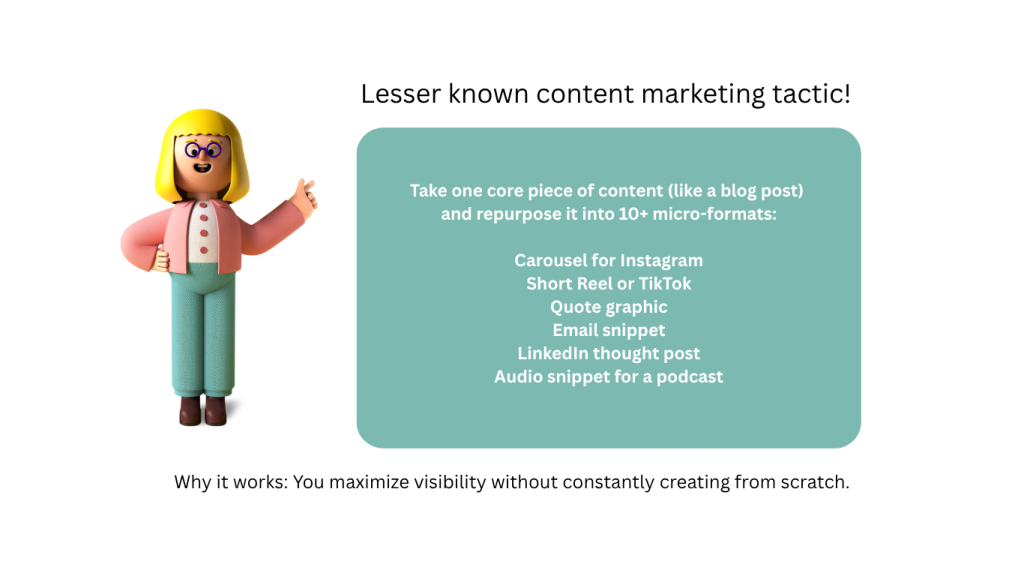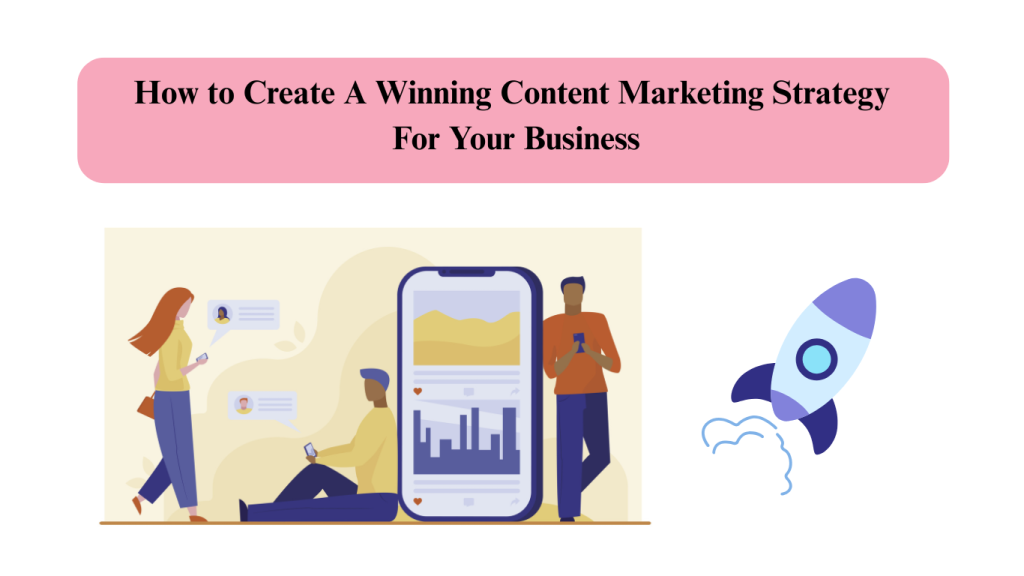Have you heard that content is king? But let’s be honest, content is a whole kingdom!
Content is a powerful tool that defines your brand tone.
For a business owner, web writer, or marketer, this multitasking tool is a powerhouse. It’s like a 24/7 assistant to your customers, which drives traffic, boosts sales, and grows your business!
Posting blogs or Instagram updates without a plan, you’re not doing content marketing. Along with content, there must be a strong content marketing strategy that helps you get the desired results.
Let’s make a smart and scalable content strategy that is practical, actionable, and easy to implement for start-ups and established businesses.
Let’s get into it!
Know Your Purpose/Goals
Before you start writing or posting content/copy for your business, stop and think about your goals. What are the goals you want to achieve with each set/ type of content?
Even for writing a blog or creating a landing page, what do you want to achieve?
Is it about–
- Making the brand unforgettable
- Turn interest into leads that convert
- Drive more visitors to the website
- Earn trust, build loyalty that lasts
- Climb higher on Google with smarter SEO
Think about it and then begin.
Pro Tip: Keep focus on broader objectives. If the goal is to increase your product signups, create educational blogs, testimonials, and landing pages that support your goal.
Connect With Your Audience.
A crucial step in your content plan. Creating content without knowing who you are serving is a total waste of time and energy. Your content should directly speak to your audience’s needs and pain points. What are they expecting, and what are their needs? (Pain points are emotional or practical barriers that make people feel stuck, stressed, or unsatisfied.)

Use data to develop buyer personas that include:
- Demographics (age, location, income, etc.)
- Behaviors and preferences
- Challenges they face
- Where do they hang out online
Tip: Interview a few of your existing customers or run a short survey to discover insights about their content consumption habits.
Revisit, Refresh, and Repurpose
Take a closer look at your content. Execute a content audit to analyze already published content, like blog posts, landing pages, product descriptions, and online publications.

You can analyze various micro information like: page title, content type, content format, word count, CTAs, SEO tags, meta descriptions, last modified date, etc.
There could be content that needs to be updated, rewritten, or deleted. Analysis helps you find out:
- Which platforms are driving results
- Which content performs well
- Where there are content gaps
Evaluating content helps to understand your audience better. It also helps in SEO ranking through data-driven insights. You can repurpose the piece of content that performs better.
Thus, content audit assists you in taking informed decisions, which ultimately gives the right direction. (for lead generation, brand awareness)
Tip: Use tools like Google Analytics, SEMrush, or Ahrefs to analyze performance and identify high-performing formats and topics.
Choose the Right Content Types
Content strategy is about knowing which type of content to create and post. Not just More blogs, but the Right kind of blogs matter. It should resonate with your audience, understand their intent, and support buyer’s journey.
Do you know?
89% of B2B content marketers use social media to distribute their content.
Source-Content Marketing Institute
Types of content you can include:

The right type of content keeps your reader engaged, improves SEO rankings, builds trust, and drives conversions.
Remember: Not every format fits every business. If you’re a B2B SaaS brand, educational blogs and LinkedIn posts might be key. If you’re a D2C brand, Instagram Reels and YouTube Shorts may be more effective.
Create a Content Calendar
Struggling to stay consistent with content? Here comes your best tool- A content calendar!
Businesses, writers and marketers use a content calendar to implement a content strategy. It shows- how, where, and when to post. Best for visualizing how the content process will be implemented.
Plan Smarter, Not Harder!

Moreover, you save time and reduce mental blocks. You can use different sheets or tools to create a roadmap of weekly/ monthly scheduling.
You and your team can easily track the calendar for learning what’s coming next. It is also helpful in organizing campaigns around launches or seasons.
A strategic content plan ensures a balanced mix of content types that you have used. It is easy to track deadlines and responsibilities with a solid routine of content creation.
Tip: Use tools like Trello, Notion, or Google Sheets to build your editorial calendar and keep your team aligned.
Focus on Quality + SEO
Here comes the crucial part which we can’t afford to ignore. It is focusing on quality, keeping SEO in mind. Chasing clicks and boosting traffic is important, but the more important thing is the quality of your content, which connects and leaves an impression for a longer time.
SEO optimized content supports the ranking in search engines. Along with SEO, valuable and well-written content helps you get noticed and achieve desired results.
Here’s how to make your content both SEO-optimized and impactful.
- Do keyword research (target long-tail keywords)
- Write with clarity and authority
- Use compelling headlines and meta descriptions
- Add internal links and visuals
- Make it mobile-friendly
Distribute and Promote Smartly
What is content distribution?
Content creation is like planting seeds, and content distribution is like watering and exposing them to the necessary areas.
It’s a process of distributing your content to various platforms and letting the world know about it. Content distribution and promotion are primarily done on online platforms and social media, paid and unpaid.
Some of the paid distribution channels are:
- Social Media Ads (Meta, LinkedIn, Pinterest)
Boost blogs, videos, and offers with precise targeting. - Google Ads (Search & Display)
Reach people actively searching or browsing related content. - Influencer Collaborations
Use paid partnerships to expand reach with authentic creators. - Sponsored Content & PR– Feature your content in newsletters, blogs, or media sites.
Your content boosts visibility, brand awareness, engagement, and ultimately results.
This process happens after you finish creating content. Now it’s crucial to know where to put your content for maximum visibility; otherwise, your efforts, resources, and time go to waste.
Further, repurposing content is time-saving, as you can use your content without creating it from scratch every time. You can reuse your blog as a social media post, an email newsletter, or a YouTube script. Use various tools to execute posting deadlines.
Plan and stay consistent with tools like:
- Buffer, Later, Hootsuite for social media
- MailerLite, Mailchimp for emails
- WordPress scheduler for blog posts
Measure, Learn, and Optimize
If you’re not checking the numbers, you’re guessing. To know what’s landing and what’s falling flat, you need to track the right metrics.
Start with the basics:
- Website traffic – Are people finding your content?
- Conversion rates – Are they taking the next step?
- Engagement – Are you sparking conversations?
- Lead generation – Is your content bringing in potential clients?
- Bounce rate & time on page – Are they sticking around or peacing out?
These insights help us to uncover where we are heading. Use them to test new content formats and shape a strategy that actually connects with your audience.
Because content is never a one-and-done process, it’s a strategy of learning, adjusting, and getting better every time.
Final Thoughts
The right content marketing is always about building the right strategy. Creating content and delivering it to the target audience is a process. This process needs content creation with intentions, clarity, and consistency. Thoughtful content planning builds the strongest connection to your audience.
So take your time. Build a strategy. And most importantly, start creating with clarity and intention. Again, leverage tools and platforms to boost your content marketing impact.
If you need help building a content strategy for your business? Drop a message below or connect here!

